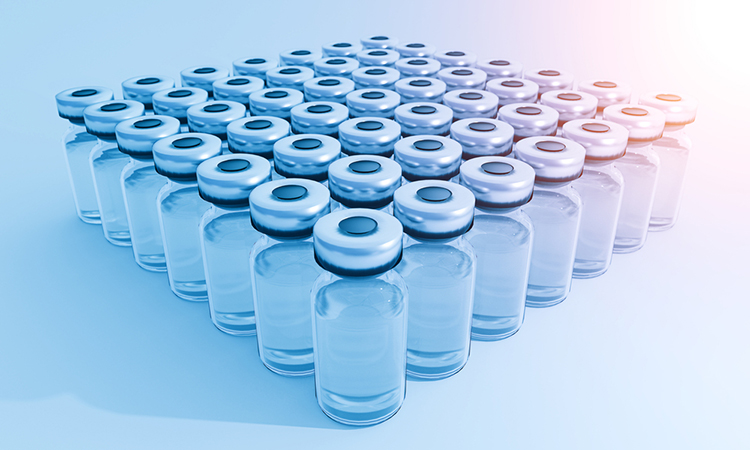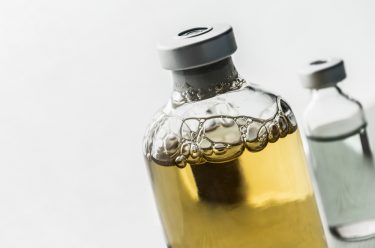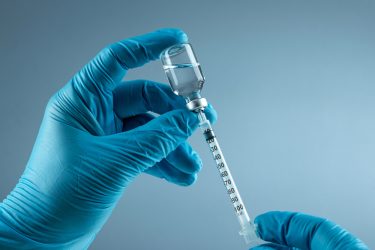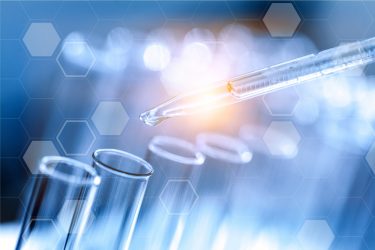The rise of biosimilars – navigating regulatory complexity in Europe
Posted: 30 December 2020 | Gabriela Marton (Arriello) | No comments yet
Gabriela Marton sets out some of the EU-associated regulatory challenges life sciences companies will need to navigate if they want to take advantage of the rise of biosimilars.


Biological medicines represent a major advance in the treatment of serious pathological conditions such as cancer, neurodegenerative and autoimmune diseases. Biosimilars, their cost-effective alternatives, enable improved patient access to modern therapies. As these therapeutics become trusted and more widely used by clinicians, we can expect a larger number of biosimilars coming onto the market as the patents and market exclusivity linked to innovator products expire. By 2019, more than 14 innovative biological products lost their Orphan Drug Designation (ODD) market exclusivity and by 2029 this will increase by a further 34 products. By 2023, patents will expire for most formulations, creating a fruitful period to develop important biosimilars.
While biological drugs are the originators of new treatments, such products are costly to develop and procure. A newly-developed molecule can take 10 to 15 years in the development phase and incur over one billion euros or dollars in R&D costs. Once that formula’s patent and market exclusivity expires, competing manufacturers can bring a biosimilar to market at a fraction of the price, enabling cheaper options for governments and potentially providing patients much wider and more affordable access to treatments. These products might take 30 to 50 percent less time to develop and cost up to 70 percent less than their biologic originals – savings that can be passed on to healthcare providers and patients. To date, biosimilars are thought to have saved the EU up to $44 billion in healthcare costs.1
Biosimilar treatments offer similar benefits for the healthcare system as generic drugs, although they cannot be compared. Generics are small-molecule formulations identical to the innovative product, while a biosimilar can only aim to be highly similar to the innovative product. However, both generic and biosimilar products are expected to have the same clinical effect as their respective innovative products.
As biologics are important in the treatment of oncological, rheumatological, endocrinological and other rare diseases, increasing numbers of manufacturers are moving from small-molecule developments to the more complex process of developing larger molecules.
Identifying the opportunity


For ODDs, biosimilars offer speed to market with cost-effective medicines, providing patients affordable access to the treatments they need. This is not only due to the lower cost of development of biosimilars versus biological innovator originals, but also increased market competition and the emerging regional or country policies designed to attract more biosimilar treatment alternatives. Most biosimilar products are introduced into markets through tenders. We have seen 85 percent discounts achieved in Norway and 45 percent in France, following local negotiations. The increased competition also forces originator biologic manufacturers and sellers to bring their own pricing down on their innovative products, further adding to the affordability of important treatments.
Our assessments of the available market information reveal that in 2019, an average ratio of 3.5 market concentration for biosimilars per originator was achieved in Europe. The price reduction of the originator after the introduction of biosimilars reached more than 60 percent in Portugal for erythropoietin (EPO), a hormone produced by the kidneys to stimulate production and maintenance of crucial red blood cells. The price per treatment per day came down by an average of 30 percent.
Building consensus and trust around alternative large-molecule treatments
Interest in biosimilars is growing, as understanding grows around this alternative route to medicines access and trust builds. Initially, there was apprehension about the safety of any interchangeability in the treatment between biosimilar and originator and vice-versa, or between two biosimilars. This was likely because biosimilars are not exact equivalents of reference drugs, they may not come in the same pharmaceutical dosage as the originator and that testing can reveal insignificant clinical differences. Yet, as multiple studies have been performed to demonstrate the low risks of interchangeability and as authorities’ interest in supporting such studies has increased to be able to indicate where impeachability is recommended, these concerns have decreased in intensity.
Biosimilars… enable improved patient access to modern therapies”
Agreement among the various authorities about how to handle biosimilars will also help. Today, more than 70 biosimilars are registered in the EU and others are under evaluation. This is due to efforts by the European Medicines Agency (EMA) to continuously improve guidelines and provide the appropriate support to bring these products to market. Similar efforts have been seen across each national drug authority around Europe and the Heads of Medicines Agencies (CMDh), to provide access to biosimilars.
There is a way to go, however. Currently, there is no harmonised approach towards interchangeability in Europe. Rather, each member state’s national medicine authority can make decisions on a case-by-case basis.
The emergence of best-practice policies
More encouragingly, most European countries have now succeeded in achieving widespread acceptance of biosimilars by all parties: payers, providers and patients. It is important that all parties understand the benefits of having such medicines available on the market.
In the Nordic countries, biosimilars are being introduced very rapidly, which has led to the impressive price competition mentioned above and wide-scale patient access to important treatments.


Further examples of the diverse policies across Europe include Germany’s programme, which offers full reimbursement from day one, at a set price, ensuring immediate access to biosimilars. Here, local clinical guidelines are being developed to encourage biosimilar use as the first choice, as appropriate.
Meanwhile Sweden is organising multiple tenders per region to encourage multiple manufacturers to operate in the market, driving competition and maximising patient access to affordable treatments.
Navigating the complexity
The picture that is building is a potentially complex one; with so many factors differing from one market to the next, there are a lot of pieces to fit together once biosimilarity is demonstrated and products are authorised.
…national governments will need to invest in a proper infrastructure to support the biosimilar opportunity”
Companies may need some help navigating the differences, as the balance achieved by good policies can be easily destabilised by measures ranging from exclusive tenders (which can negatively impact biosimilar sustainability and lead to supply shortages), to fixed reimbursements pricing (which can destabilise competitive markets and discourage manufacturers’ participation). There are also many countries that do not yet have a policy for incentives or have not yet fully implemented more recent policies.
In some countries, policies are ensuring that market volumes are guaranteed, whereas in others there is no such guarantee so after price readjustment, market volumes are lost.
The education imperative
Other challenges are linked to education. Education around biosimilars is sorely needed, not only for healthcare professionals but also for patients, decision-makers and perhaps also the media – not just about the differences and relative benefits between biologics and biosimilars, but also how such products come into use and how they are administered.
This education is vital for building trust and supporting interchangeability in treatment, where applicable. Without this confidence in substituting original treatments with new biosimilars, healthcare professionals will continue to recommend the reference product, which will stifle competition and lead to price increases over time, a phenomenon also seen in generics.
Responding to market forces
For life sciences companies, biosimilars present an exciting opportunity to bring important treatments to market more affordably and in higher volumes, putting the needs of patients first.
As more biological products lose their exclusivity, there is likely to be a race to bring biosimilars to market and companies that hold back could lose significant ground.


For medicine manufacturers, the ability to develop and roll out the right products at the right price and in sufficient volumes is paramount to keep pace with market demand and fulfil patients’ needs. Europe is a great place to get this right, as the EU authorities have the most advanced understanding and emerging policies. The US Food and Drug Administration (FDA) is catching up quickly too, presenting a huge expansion opportunity. The US market also has interest in creating cohesive guidelines and legislation around biosimilars interchangeability, something that is still lacking at the EMA. Japan is also taking a proactive interest in the field. The hope is that respective national and regional regulators will increasingly share best practice rather than reinvent the wheel for their own market.
For their part, national governments will need to invest in a proper infrastructure to support the biosimilar opportunity, with attractive policies and incentives for biosimilars manufacturers to invest in development and commercialisation of these products, to ensure competitive and sustainable supply and affordable pricing. This all needs to be supported by an education drive, so that all of the parties involved understand the important role played by biosimilars and the broader potential for transforming global patient access to the latest treatments.
About the author
Gabriela Marton is Regulatory Affairs Director and Quality Director at Arriello, where she leads the regulatory affairs functions, developing robust and efficient market access and post-marketing strategies to support pharmaceutical companies’ business needs. She has over 14 years’ experience in regulatory affairs and compliance within the pharmaceutical and food supplements sectors. Previously, she was an independent regulatory consultant and has held several positions in regulatory affairs and compliance in various pharmaceutical companies, one of which is GlaxoSmithKline (GSK) where she started her regulatory career.
References
- Europe Demonstrates Benefits of a Strong Biosimilars Marketplace, Inside Sources, October 2017: https://www.insidesources.com/europe-demonstrates-benefits-strong-biosimilars-marketplace/
Related topics
Biologics, Biopharmaceuticals, Biosimilars, Industry Insight, Regulation & Legislation
Related organisations
European Medicines Agency (EMA), Mundipharma, Samsung Bioepis, US Food and Drug Administration (FDA)









